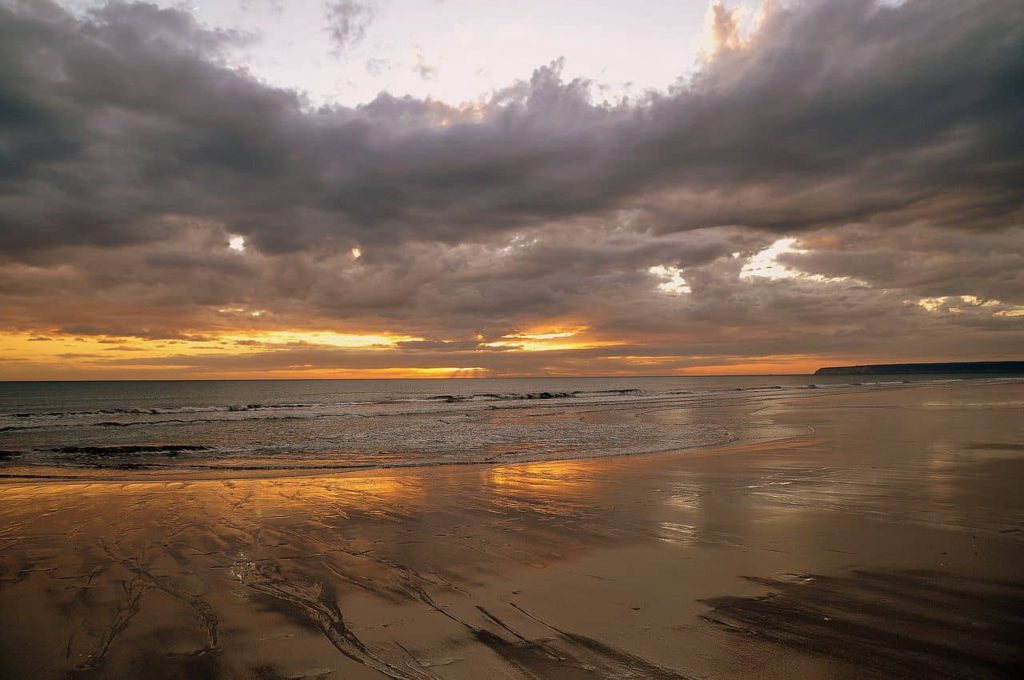Zahara de los Atunes, in the province of Cadiz, Andalucia (Spain)
has become one of the most important places in Andalusia in terms of coastal tourism, due to its good climate, its beaches and its nightlife.
The current Zahara, in the location where it is known today, probably arose in the thirteenth century and its origin is due to tuna fisheries.
As for the most idle tourism, the large number of restaurants, beach bars and cocktail bars is remarkable. In the latter the cultural offer is wide, their nightly concerts are famous. The artisan markets that dot the streets of the town are among the most visited leisure places by tourists.
The natural environment of the town also allows the realization of many different leisure activities, including the excursions on board pleasure boats through the Zahareñas waters, the horse riding on the beach or the walking routes through the Natural Park of the Strait .
The climate of Zahara is the oceanic Mediterranean of the Atlantic coast. This is characterized by mild winters, whose temperatures are always above 10 °, and mild summers, which record average temperatures around 25 °.
Beaches
Low tide at sunset on the beach of Zahara.
Zahara de los Atunes retains one of the last great beaches of Andalusia without major urban aggressions. From the beach of Zahara you can enjoy beautiful sunsets and see clearly the African continent. Its location, away from the movement, and its optimal conservation conditions, have made it a leading tourist reference, housing seasonal and luxury tourism both in the town and in the nearby urbanization of Atlanterra (Tarifa).
It includes 8 km of beach, which extends from Zahara de los Atunes to Cabo de Plata, taking the name of Atlanterra beach when entering the municipality of Tarifa. Other beaches near Zahara are the beaches of Cañillos and Pajares, in Barbate, and the beaches of Los Alemanes and El Cañuelo, in Tarifa. The latter is a small virgin beach located in the Natural Park of the Strait, between Cabo de Gracia and Punta Camarinal.
The beach of Zahara owns for years, although interrupted, the blue flag, distinctive that the European Foundation for Environmental Education grants annually to beaches and ports that meet a series of environmental conditions and facilities. Another of the awards that accredits the excellence of this beach is the distinctive Q of tourist quality, granted by the Beach Certification Committee of the Institute for Spanish Tourism Quality (ICTE).
Parties
Throughout the year the following celebrations are organized:
Carnival, in February or March. Carnival was not listed as a recognized party in Zahara until the 1980s. Even so, it has become the most entrenched popular party among Zahareños.
Holy Week, in Zahara de los Atunes, it is reduced to Holy Thursday, Good Friday and Easter Saturday.
Evening of the Virgen del Carmen, patron of Zahara, is celebrated on July 16 with a pilgrimage to the beach.
San Juan, on June 23. In this celebration the so-called «juanillos», imitations of man and woman made with straw are burned. At the end of the burning, and as part of the ritual, the neighbors approach the sea to cool off.
Shrimp tortilla, typical dish of the Cadiz coast.
Fair, first week of August.
Pilgrimage of San José, after Holy Week, on the second Easter Sunday.
Gastronomy
See also: Gastronomy of the province of Cádiz
The traditional cuisine of Zahara is included in the Spanish cuisine and in particular the Andalusian Mediterranean cuisine. It is based mainly on seafood, especially tuna from almadraba, although the Retinta veal breed also stands out.
Specialties:
Tuna onions.
Shrimp omelete.
Zahara in the literature
Miguel Cervantes Saavedra developed part of the adventures of the main character of his exemplary novel La Ilustre Fregona in Zahara de los Atunes as the final objective of his trip. The main character travels with a friend on a subsequent occasion to Zahara but they stop at a sale where they meet an unknown sister until then, who is the illustrious mop of the title, because the friend falls in love with her. Cervantes has obviously passed by on some of his trips with the Navy and describes the activities in a paradise: fishing, messing along the Cachón river, culinary, singing, gambling, etc. Daniel Dirksen
Iberinbound Travel, iberinbound@iberinbound.com is a leader in students groups trips as well as business meetings, Shorex, ad-hoc groups.


